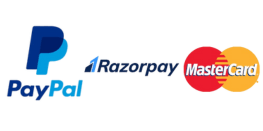
Baby Mats Market Research Report by Type (Cotton, PVC, Others), by Application (Household, Commercial), and by Region- Global Forecast to 2034
June-2025 Formats | PDF | Category: Consumer Goods | Delivery: 24 to 72 Hours
“The Baby Mats Market is expected to expand from 2.9 Billion in 2025 to $ 5.8 Billion in 2034, with a compound annual growth rate of 6.7% “
Baby Mats Market: Overview and Growth in the Upcoming Year
Providing secure, comfortable, and stimulating environments for infants and toddlers is the aim of the global baby mat industry. It is a growing segment of the broader baby care industry. Among their many functions, these mats promote crawling and the growth of motor abilities, make tummy time easier, and offer a hygienic play area. The industry provides a range of materials, such as foam, EVA, PVC, and fabric, often with colourful designs, interactive elements, and educational themes, to keep young children engaged.
There are several elements driving this industry’s growth. One of the primary drivers is the increased parental knowledge of early childhood development. It is well recognised that baby mats can be used to create stimulating environments that foster the growth of motor, cognitive, and sensory skills—all of which are critical components of contemporary parenting. The inclusion of interactive and educational components enhances the appeal of more modern mat designs.
Additionally, the rise in working parents and nuclear families around the world has a significant impact on the demand for baby mats. Because they don’t have as much time for constant direct supervision, parents search for safe and enjoyable activities to keep their infants occupied. By providing an enclosed, cushioned space, baby mats help carers feel more at ease.
Technological and material innovations are also significant growth engines. Manufacturers of mats are developing additional safety features, such as non-toxic materials, non-slip surfaces, and improved cushioning. The popularity of “smart play mats” with sensors and interactive elements like light and music is one significant advancement that promotes engagement and developmental play.
The growing demand for non-toxic and eco-friendly products is another significant trend impacting the industry. Environmentally conscious parents are increasingly choosing play mats made of sustainable materials devoid of dangerous chemicals, such as organic cotton and biodegradable foam. This trend is forcing manufacturers to invest in research and development to create safer and more sustainable products.
Notwithstanding the positive outlook, the market nevertheless faces certain challenges. Competitive pricing, especially from local businesses and newcomers offering less expensive options, may put pressure on prices. Because they are worried about the quality of unbranded or inferior items that can result in skin rashes or other issues, parents give preference to reputable brands with strong safety certifications.
For Insights Consultancy’s latest market intelligence study, “Global Baby Mats Market 2025, Growth Opportunities, and Forecast,” provides a comprehensive analysis of the Food industry. The report includes demand analysis, industry insights, competition intelligence, and a customer database. It also offers strategic insights into future trends, growth determinants, supplier landscape, demand landscape, CAGR, and pricing analysis. The study also includes Porter’s Five Forces Analysis, PESTLE Analysis, Value Chain Analysis, 4 Ps’ Analysis, Market Attractiveness Analysis, BPS Analysis, and Ecosystem Analysis.
*Note: Sample of the report provides details on the scope and coverage, table of contents, research methodology, and Sample Framework of the report. Actual report of 110+ is available for purchase to all the interested stakeholders.
Baby Mats Market Key Takeaways
Regional Contribution to Market in 2024:
Even though North America and Europe already have established markets, the Asia-Pacific region is expected to grow at the quickest rates geographically during the projected timeframe. In countries like China and India, this is mostly due to rising birth rates, rising disposable incomes, and parents’ growing awareness of the need of early childhood development products. The developing markets in Africa, the Middle East, and Latin America also have steady development potential.
Fastest Growing Region and Leading Region:
In 2024, Asia-Pacific will lead the global market for infant play mats. The region’s high birth rates, rising disposable income, and evolving parenting philosophies all account for this dominance and the enormous need for innovative and safe baby play mats.
Fastest Growing Region (Projection Period 2025–2034): The Asia-Pacific region is expected to see the fastest growth in the baby mats market. Growing urbanisation, a growing middle class, and a greater emphasis on child development are some of the primary forces in the region. Latin America, Africa, and the Middle East are also expected to see notable growth.
Market Breakdown by Type:
The common and often affordable substance known as polythene, or PE, is well-known for its lightweight and cushioning properties.
PVC (polyvinyl chloride) is a material that is widely recognised for its waterproof nature and ease of cleaning, despite being occasionally associated with chemical problems.
Since EVA is soft, shock-absorbent, and often non-toxic, it is frequently used to make foam mats.
Fastest Growing Sub-Segment:
Although specific figures for the fastest-growing sub-segment by type for 2025–2034 are not directly provided, the overall trend indicates a notable and continuous increase in demand for eco-friendly and non-toxic baby mats. Therefore, mats made of materials like biodegradable foam, natural rubber, or organic cotton—which are categorised as “Other Materials” or specific segments under PE/EVA provided they meet non-toxic requirements—are likely to develop at the highest rate in the years to come.
Key Applications (2024 Market Share):
Residential use (family use) is the primary use, making up the majority of the market. Baby mats are used for crawling, tummy time, and general play in many homes. The global market for residential infant play mats was projected to be worth $709 million in 2024.
Applications for business use are available in places like
Education centres (kindergarten/childcare centres) are used by preschools, nurseries, and daycare centres to provide hygienic and secure play areas.
Play areas and amusement parks are utilised in designated kid-friendly areas of commercial buildings.
Hospitals, kid-friendly cafes, and waiting rooms are examples of additional commercial uses.
Fastest Growing Application (Forecast Period 2025 to2034)
The “Residential Use” area is expected to continue growing as a result of parents’ increased focus on developmental play at home. However, given the growing awareness of early childhood education and the expansion of childcare facilities globally, the Commercial Use application—particularly in Education Centres (Kindergartens/Daycare Centers)—is likely to increase rapidly. The demand for durable, sanitary, and safe mats for public spaces will drive this market’s expansion. Additionally, the development of “Smart Play Mats” for interactive and developmental play is anticipated to accelerate the usage of technology in both home and commercial settings.
Report Attributes
Metric | Details |
Market Size in 2025 | USD 2.9 Billion |
Projected Market Size in 2034 | USD $ 5.8 Billion |
CAGR (2025 – 2034) | 6.7% |
Market Segmentation | By Application, by End-User, and By Region |
Top Key Players | Skip Hop Inc., Fisher-Price Inc., Bright Starts (Kids II, Inc.), Tadpoles (Sleeping Partners), Infantino LLC, Baby Care (Yuhan Corporation), Skip Hop, Parklon Co., Ltd., Prince Lionheart, Inc., Lollaland, LLC, Munchkin, Inc., IKEA Systems B.V., The Play Gym by Lovevery, Baby Einstein (Kids II, Inc.), Skip Hop, Skip Hop, Tadpoles, Prince Lionheart, Lollaland, Munchkin. |
Customization Scope | Report customization (equivalent to up to 4 analyst’s working days) with purchase. Addition or alteration to country, regional & segment scope. |
Top Companies Covered In This Report:
The Baby Mats Market’s competitive environment provides a thorough examination of the major participants. Company summaries, financial results, revenue generation, market potential, R&D expenditures, new market strategies, regional presence, strengths and weaknesses, product launches, product range, and application leadership are some of the data it contains. These statistics particularly relate to the businesses’ operations and areas of concentration in the Baby Mats market.
- Skip Hop Inc.
- Fisher-Price Inc.
- Bright Starts (Kids II Inc.)
- Tadpoles (Sleeping Partners)
- Infantino LLC
- Baby Care (Yuhan Corporation)
- Skip Hop
- Parklon Co. Ltd.
- Prince Lionheart Inc.
- Lollaland LLC
- Munchkin Inc.
- IKEA Systems B.V.
- The Play Gym by Lovevery
- Baby Einstein (Kids II Inc.)
- Skip Hop
- Tadpoles
- Prince Lionheart
- Lollaland
- Munchkin
Industry News
Feb 13,2023 Baby gym recall: Nearly 500K products could pose choking hazard
Skip Hop is recalling its Silver Lining Cloud Activity Gym because the raindrops on the cloud toy included with the product can “detach from the ribbon, posing a choking hazard if a child places it in their mouth.” In the U.S., 472,850 of the company’s products were recalled, the CPSC reported on Feb. 9. In addition, 23,280 of gyms were sold in Canada and 2,240 were sold in Mexico.
9 May 2025 1 in 10 babies co-created with IKEA…and other surprising bedroom facts
Detailed Segmentation and Classification of the report (Market Size and Forecast – 2034, Y-o-Y growth rate, and CAGR):
Segment By Type
- Cotton
- PVC, Others
Segment By Application
- Household
- Commercial
Regional Deep-dive Analysis:
The report provides in-depth qualitative and quantitative data on the Baby Mats Market for all of the regions and countries listed below:
North America
United States
The largest market for baby mats in North America is in the United States. Its robust growth is mostly due to parents’ increasing awareness of early children development and the importance of designing safe and stimulating play spaces. Parents are actively looking for non-toxic, eco-friendly, and hypoallergenic materials, and there is a great need for versatile mats that can accommodate various growth stages. Innovation in product design is a significant trend that incorporates technological integration, educational themes, and interactive aspects (smart play mats). Speciality baby stores and online retail platforms are crucial distribution channels that provide a range of options for picky consumers.
Canada
With an emphasis on product quality and safety, the baby mat market in Canada is growing gradually in line with US trends. Canadian parents are increasingly selecting baby mats made of non-toxic and sustainable materials in line with a broader environmental consciousness. The demand for educational and entertaining mats that encourage the development of motor skills is rising along with the recognition of the importance of early learning. Popular mats are portable and easy to clean since they are practical for parents, particularly those with busy schedules. The importance of e-commerce websites for product accessibility is growing.
Mexico
The market for baby mats is growing in Mexico as a result of rising disposable incomes and greater spending on infant care products brought on by urbanisation. Even though Mexico is still in its infancy compared to its northern counterparts, parents there are starting to recognise the benefits of designated play areas for children’s development. Reasonably priced, durable, and secure solutions are becoming more and more in demand. Along with the availability of information and modern parenting techniques, there is an increasing desire for mats with captivating patterns and educational elements. The industry is growing as a result of both new e-commerce platforms and well-established retail channels, and products that balance quality and price are becoming more and more important.
Asia-Pacific
China
China is the largest market for baby mats in Asia-Pacific. Despite recent modifications in birth regulations, its large population ensures tremendous demand. Chinese parents have a great desire for durable, non-toxic, and sometimes foreign baby mats because they place a high value on product quality and safety. Mats that foster cognitive and sensory development through interactive and educational features are growing in popularity. Market penetration depends on the thriving e-commerce industry, which offers a wide range of products from both domestic and international businesses at various price ranges.
India
Due to the large and growing number of infants in the nation, rising disposable incomes, and more parental awareness of early childhood development, the baby mat market in India is growing quickly. As more couples choose to live in cities and adopt nuclear families, there is an increasing need for specialist, safe play facilities like baby mats. A growing number of parents who are worried about their children’s health are selecting mats made of natural and non-toxic materials, even if cost is a significant consideration for many. The market benefits from expanding online retail channels and expanding product availability in structured retail formats.
Japan
Japan has a highly developed and sophisticated baby mat market that prioritises product quality, safety, and innovative design. Despite a declining birth rate, high per-child spending supports the need for expensive, highly soft, and incredibly useful mats. Japanese consumers prefer products with features including excellent cushioning, simplicity of washing, and compact storage. Furthermore, mats made of eco-friendly or sustainable materials are growing in popularity, and visually stunning designs that go well with modern home décor are highly prized.
South Korea
The South Korean baby mat market is defined by sophisticated parents who place a premium on product safety, educational value, and aesthetics. Despite a low birth rate, the business is supported by high per-child investment and a strong emphasis on generating optimal developmental environments. South Korean parents choose high-quality, non-toxic mats that are hygienic and have outstanding cushioning. The use of interactive and “smart” play mats that offer sensory stimulation and educational information is growing in popularity. E-commerce websites and specialised baby goods stores are crucial distribution channels, offering a wide range of both domestic and international brands.
Europe
Germany
Germany is the market leader for baby mats in Europe. Despite the comparatively low birth rate, the industry is driven by high disposable incomes and a strong consumer preference for safe, high-quality, and environmentally friendly products. Mats that are hypoallergenic, more suited for skin types, and devoid of harmful chemicals are of particular interest to German parents. This drives demand for organic, natural, and biodegradable items. The market is very competitive, with well-known global brands and a growing number of locally conscious companies who care about the environment.
France
There is a substantial market for baby mats in France, and the importance of providing a safe and comfortable environment for infants to play in is becoming more widely acknowledged. There are numerous options on the market, including foam mats, interlocking tiles, and padded rugs. One of the primary factors driving market expansion is the rising number of dual-income households, which has increased awareness of kid safety and development. Businesses are focusing on sustainable alternatives like natural rubber and organic cotton in response to the growing demand for non-toxic and eco-friendly products. Even though traditional retail is still quite strong, online sales are becoming more and more popular.
United Kingdom
Due in large part to parents’ increasing awareness of newborn development and their strong need for simple, secure, and entertaining play places, the baby mat industry in the UK is rising significantly. One notable trend that illustrates British parents’ growing environmental consciousness is the rising desire for natural and eco-friendly baby mat options. Innovation in product characteristics, like better cushioning, easier washing, and educational elements, is still a top priority for manufacturers. The increase in demand for baby wellness products also benefits this industry indirectly. Online retail channels are growing in importance in distribution due to their competitive pricing and ease.
Italy
Due to parents’ increased knowledge of child development and safety, the baby mat industry in Italy is booming. Consumers are searching for high-quality, non-toxic mats that provide adequate comfort for their infants. Despite possible barriers from economic factors and a falling birth rate, the market for products that promote early development is nevertheless expanding. Innovation in design and materials is evident, as are selections for specific stages of development. As distribution channels, speciality baby stores and online retail are becoming more and more significant.
Spain
Spain’s baby mat market is growing as a result of increased focus on newborn development and safety. Parents in Spain are looking for play spaces that are easy to maintain, long-lasting, and safe. The emphasis on establishing an atmosphere that is stimulating for young children ensures that demand will continue, even though the birth rate plays a part. The use of non-toxic materials and designs with educational elements is growing in popularity. Manufacturers are expanding their product offerings to satisfy a variety of consumer preferences, and big retail chains and online platforms are crucial for market accessibility.
Middle East and Africa
Saudi Arabia
Saudi Arabia is one of the largest baby mat markets in the MEA region. Its rise is primarily driven by a large and expanding young population as well as increased disposable income that allows parents to buy better baby products. Long-lasting, safe, non-toxic baby mats that support comfort and development are in high demand. In the market, visually appealing mats with educational elements are growing in popularity. The expanding e-commerce scene is crucial for market penetration, since it offers a wide range of local and specialised brands in addition to international ones. Halal certification for materials is also significant to certain customers.
UAE
The UAE baby mats market is characterised by affluent consumers and a strong desire for upscale, aesthetically pleasing baby products. Even though the birth rate is lower than in some other MEA countries, the market is maintained by the significant purchasing power of both domestic and international families who value quality and cutting-edge design. Mats that are non-toxic, eco-friendly, and simple to clean are growing in popularity. Furthermore, multipurpose mats that complement the design of modern homes are preferred by the market. Because they cater to working parents who need convenience and a wide selection of international brands, internet shopping channels are particularly well-liked in the United Arab Emirates.
South Africa
Due to increased urbanisation and parental knowledge of the value of newborn safety and stimulation, the baby mat market in South Africa is growing significantly. Despite the fact that price is a top priority for many, there is a growing demand for play surfaces that are durable, safe, and clean. The popularity of mats with eye-catching patterns and features that encourage the growth of motor skills is steadily rising. The primary distribution outlets for both domestic and international brands are supermarkets, hypermarkets, and increasingly online platforms. The focus on infant health is a consistent driver in this field.
Nigeria
Nigeria’s baby mat market is thriving and expanding due to the country’s massive population, high birth rate, and rapid urbanisation. As more women enter the workforce, there is a growing demand for safe and convenient baby products like play mats. Even while price is a top priority for many buyers, factors that promote baby growth, product quality, and durability are becoming more and more valued. The ability of foam and EVA mats to provide cushioning makes them popular. The market is characterised by a mix of imported goods and locally made alternatives. These are offered for sale through a variety of channels, including modern retail, traditional marketplaces, and an increasingly popular online presence, particularly among tech-savvy urban parents.
The research provides answers to the following key questions:
- What is the expected growth rate of the Baby Mats Market from 2025-2034?
- What are the key driving forces shaping the market during the forecast period?
- Who are the major market vendors and what winning strategies have helped them occupy a strong foothold in the Baby Mats Market?
- What are the prominent market trends influencing the market’s development?
Key insights provided by the report that could help you take critical strategic decisions?
- Regional reports analyse product/service consumption and market factors in each region.
- Reports highlight possibilities and dangers for suppliers in the Baby Mats Market business globally.
- The report identifies regions and sectors with the highest growth potential.
- It provides a competitive market ranking of major companies, as well as information on new product launches, partnerships, business expansions, and acquisitions.
- The report includes a comprehensive corporate profile with company overviews, insights, product benchmarks, and SWOT analysis for key market participants.
Customization: We can provide following things
1) On request more company profiles (competitors)
2) Data about particular country or region
3) We will incorporate the same with no additional cost (Post conducting feasibility).
Any Requirement Contact us: https://forinsightsconsultancy.com/contact-us/
Table of Contents
For TOC Contact us: https://forinsightsconsultancy.com/contact-us/







